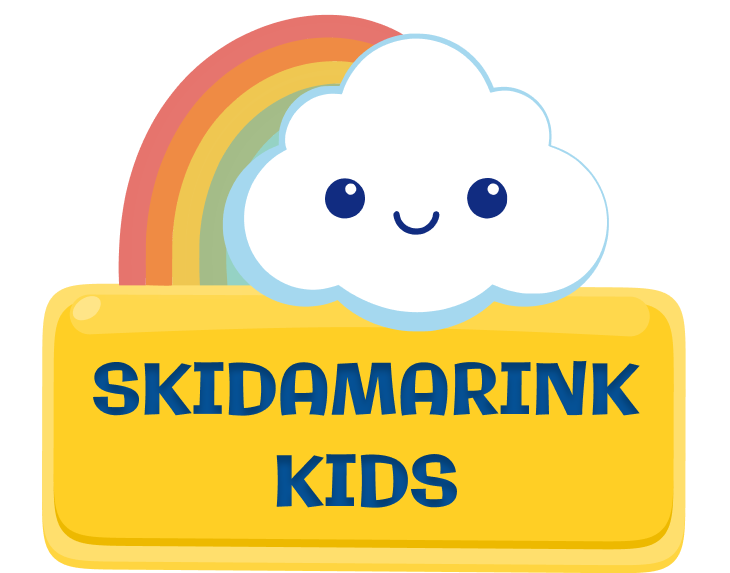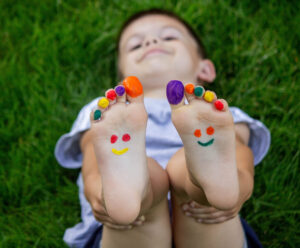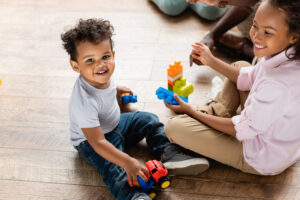What Child Self Regulation Really Means
Self regulation is your child’s internal control system. It’s what helps them pause when they’re upset. This skill helps them think through their options. They can then choose an appropriate response instead of just reacting.
Think of it as the brain’s ability to manage emotions, control impulses, and adapt when things don’t go as planned.
Here’s what changes everything: child self regulation is actually a complex skill that develops over time throughout a persons lifetime. Guidance and modeling are critical for this skill development to occur. It also works more efficiently when a child’s brain grows in a balanced way.
Everyday Examples of Self Regulation
This skill shows up in everyday moments throughout your child’s day. It’s what allows them to wait their turn during games. Self regulation helps them handle disappointment when they don’t get what they want. They can sit still during story time because of it. The skill helps them use words instead of hitting when they’re frustrated.
Why Brain Development Matters
But here’s the key insight that can transform how you see your child’s challenging moments. Child self regulation requires higher level brain development. It’s not something children can just decide to do better. Their brains have to actually develop the neural connections that make self control possible. This takes time and the right experiences.
So when we tell a 2 or 3 year old “they should know better” after they do something impulsive, it leads us to respond in ways that don’t help. Their brains simply aren’t developed enough yet for that level of control. However, when we see challenging behaviors and tantrums as opportunities to model self regulation, it becomes a game changer.
This shift helps us calm down first, so we can focus on helping them calm down too. This is the beauty of co-regulation. We focus first on managing our own emotions and then on helping them manage theirs.
This helps shift our focus from “my child is acting bad” to “I can model calm, so my child will one day learn to calm themselves.” When we stay calm, we help both of us avoid getting into a “fight, flight, or freeze” state of mind. When we get into a “rest and digest state,” we can think more clearly and logically. This will help your child make better choices over time.
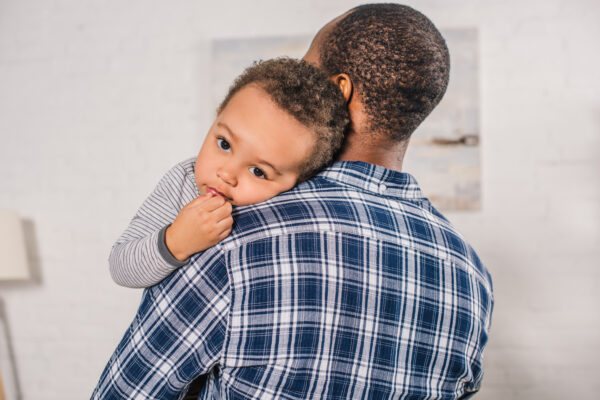
Child Self Regulation Goes Beyond Childhood Behavior
This basic skill affects success in every area of life throughout our entire lifespan. Strong self regulation skills help us delay gratification. This means saving money for something important instead of spending right away. Studying for a test instead of watching TV is another example.
Managing Stress and Making Decisions
These skills help us manage stress and stay calm during hard situations. Taking deep breaths when frustrated becomes easier. Finding healthy ways to cope with disappointment is possible. Self regulation helps us make decisions toward long term goals. We can choose actions that benefit our future selves, even when it’s harder in the moment.
The Executive Functioning Connection
Child self regulation is one of the core executive functioning skills. These are the mental abilities that include working memory, cognitive flexibility, and inhibitory control. These skills control and regulate other abilities and behaviors. Think of them like an air traffic control system that manages planes at an airport.
What Strong Self Regulation Looks Like
When self regulation is strong, people can focus on tasks and remember instructions. They can handle multiple demands and switch between activities smoothly. Managing emotions during conflicts becomes possible. Maintaining relationships gets easier. Success in school and work is more achievable. People can handle life’s challenges with strength.
When Self Regulation Is Weak
When child self regulation is weak, every area of life becomes more difficult. Children may struggle in school, but it’s not because they lack smarts. The real issue is that they can’t control their attention. Managing frustration when learning gets hard becomes a challenge.
Adults may have trouble keeping relationships and meeting work deadlines. Making healthy choices can be difficult. This happens even when they understand what they should do. These challenges with emotional regulation can last throughout life without proper support.
How God Designed Our Brains to Develop
Understanding how child self regulation develops requires looking at how God designed our brains to grow and mature. This process is both amazing and follows a clear pattern. This pattern creates the foundation for healthy development.
The Right Brain Develops First
Our brains were designed to develop in a very clear sequence. During the first 18 to 24 months of life, the right side of the brain takes the lead. This side handles big picture thinking. Big body movements are controlled here too. Social awareness and emotional regulation also come from this side.
The right brain is building the basic systems that help children feel safe. These systems help them connect with others and develop body awareness. These early experiences are critical for laying the groundwork for verbal communication and child self regulation later.
Then the Left Brain Takes Over
After about 18 to 24 months, the left side of the brain begins to develop more. This side focuses on details and fine motor skills. Language, logical thinking, and learning in order also come from here. The left brain builds on the foundation that the right brain has already made.
This development pattern is critical for the brain to work together well. When both sides develop in the right order and learn to work as a team, it lays the foundation. Our bodies and nervous systems can then develop in a mature, balanced way.
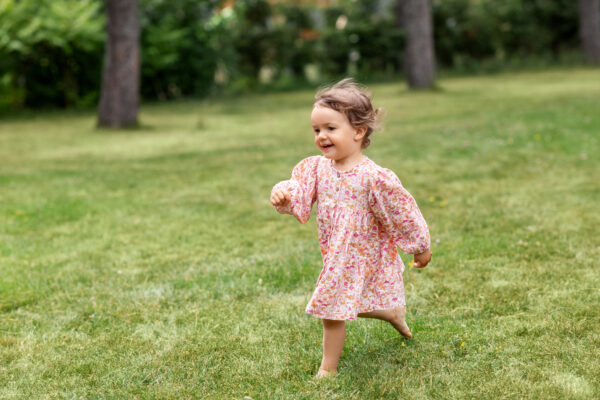
The Car Analogy That Changes Everything
Think of your child’s brain like a car with both a gas pedal and a brake pedal. The right brain acts like the brake pedal and helps with impulse control, emotional regulation, and safety awareness. The left brain acts like the gas pedal and provides motivation, excitement, and the drive to learn and reach goals.
When both systems work together smoothly, your child can handle life’s challenges with confidence. They can be excited about new learning (gas pedal) while still maintaining self control and social awareness (brake pedal).
When the System Gets Imbalanced
But when there’s an imbalance between these systems, it affects your child’s ability to self regulate. Poor communication between brain hemispheres creates challenges too.
Here’s what’s crucial to understand: proper brain balance plays a big role in your child’s ability to self regulate. Brain balance affects how they learn and how they manage their emotions throughout their entire life.
The Beautiful Truth About Brain Development
Here’s the hopeful news that can change everything. When children get the right experiences at the right times, their brains naturally develop the balance they need. This balance leads to strong child self regulation and is critical for the executive functioning skills that will serve them throughout their lives.
Research Supports Early Movement and Play
Research shows this clearly. Preschoolers with strong self regulation through movement and play are better behaved and better prepared for school success. The foundation built through proper brain development creates lifelong benefits.
Most encouraging of all, it’s never too late to support brain balance. Simple activities can help, and the right kind of play can promote brain integration. These can help children develop better self regulation skills.
Your Child's Foundation for Success
Understanding brain balance helps us see our children’s development in a completely new light. Instead of asking “Why won’t my child just behave?” we can ask a better question. “What does my child’s brain need to develop better child self regulation?”
Learning Happens Over Time
Brain balance helps make learning child self regulation more possible. But it’s important to understand that these skills are actually learned through guidance and modeling. Development continues over a person’s lifetime.
When the brain develops in as balanced a way as possible, this learning becomes easier and more natural. Supporting healthy brain balance gives our children what they truly need. We provide them the brain foundation that makes it easier to learn self regulation skills through our patient teaching and guidance.
Your Child Wants to Succeed
Your child wants to succeed just as much as you want them to. When we support their brain development through understanding and thoughtful choices, we’re giving them the greatest gift possible. We’re giving them the brain foundation they need to handle life’s challenges with confidence and joy.
Understanding brain balance and child self regulation opens doors to so many ways we can support our children’s development. You might be looking for activities to strengthen self regulation skills. Or you might want to understand what specific behaviors might be telling you about your child’s unique needs. This foundation makes everything else possible.
Important Note
This information is for educational purposes and not meant for diagnosis purposes. My desire is to see us change the way children are experiencing childhoods so they can develop more aligned with how God designed our brains to function, so families can thrive. Simple changes can make a big impact on the life of your child.
If you’re concerned about your child’s development, trust your instincts. Talk to your pediatrician about your observations, and consider seeking evaluation from professionals like occupational therapists or functional neurologists who specialize in brain-based approaches to childhood challenges.
Ready to dive deeper? In our next blog, Why Your Child Can’t Self Regulate: The Hidden Brain Issue, we’ll explore what can disrupt healthy brain balance and help you identify what your child’s behavior might be telling you about their specific needs. You can also learn more about Developmental Play Guide: Reading Your Child’s Behavior.
Ready to provide activities to help your child?
– Kendra
